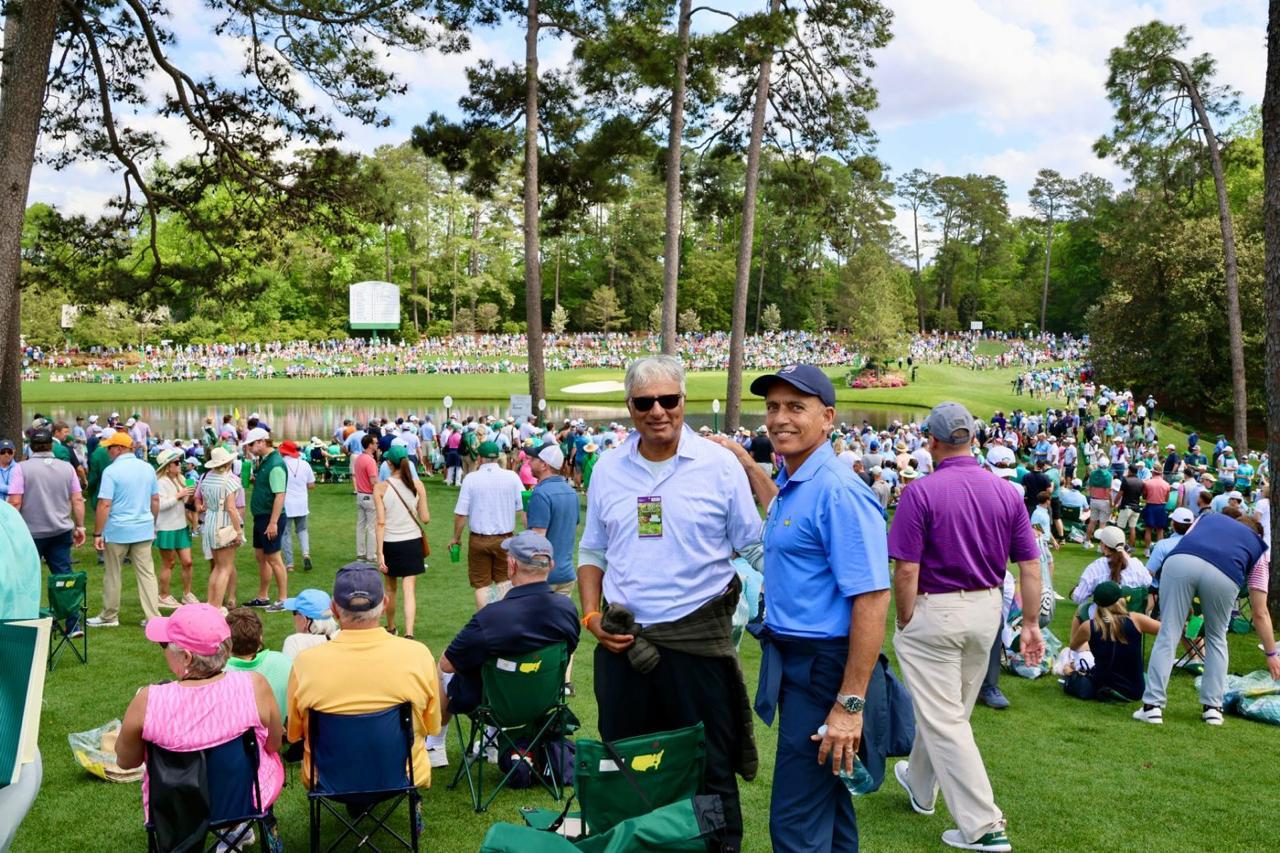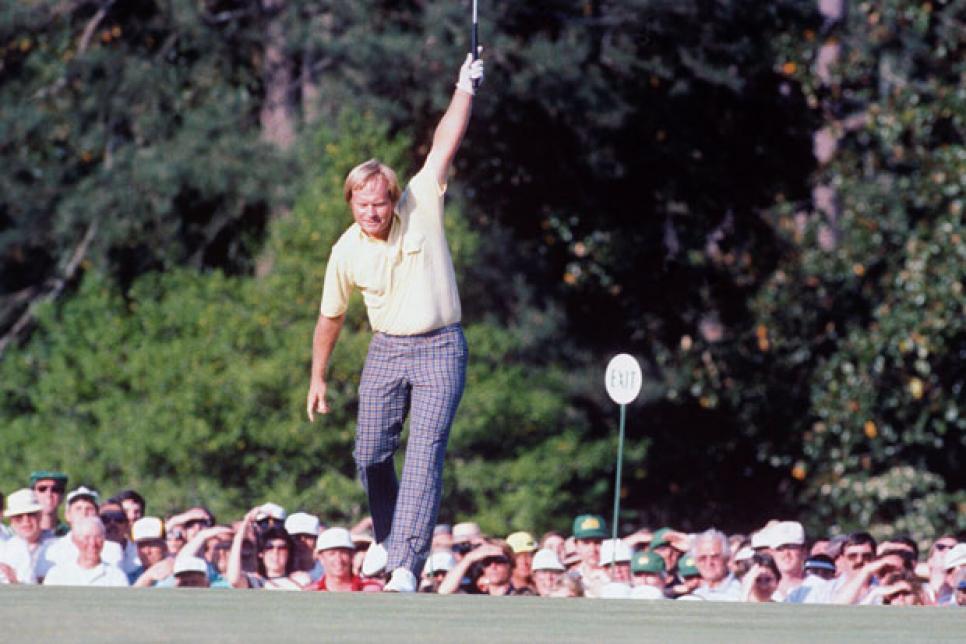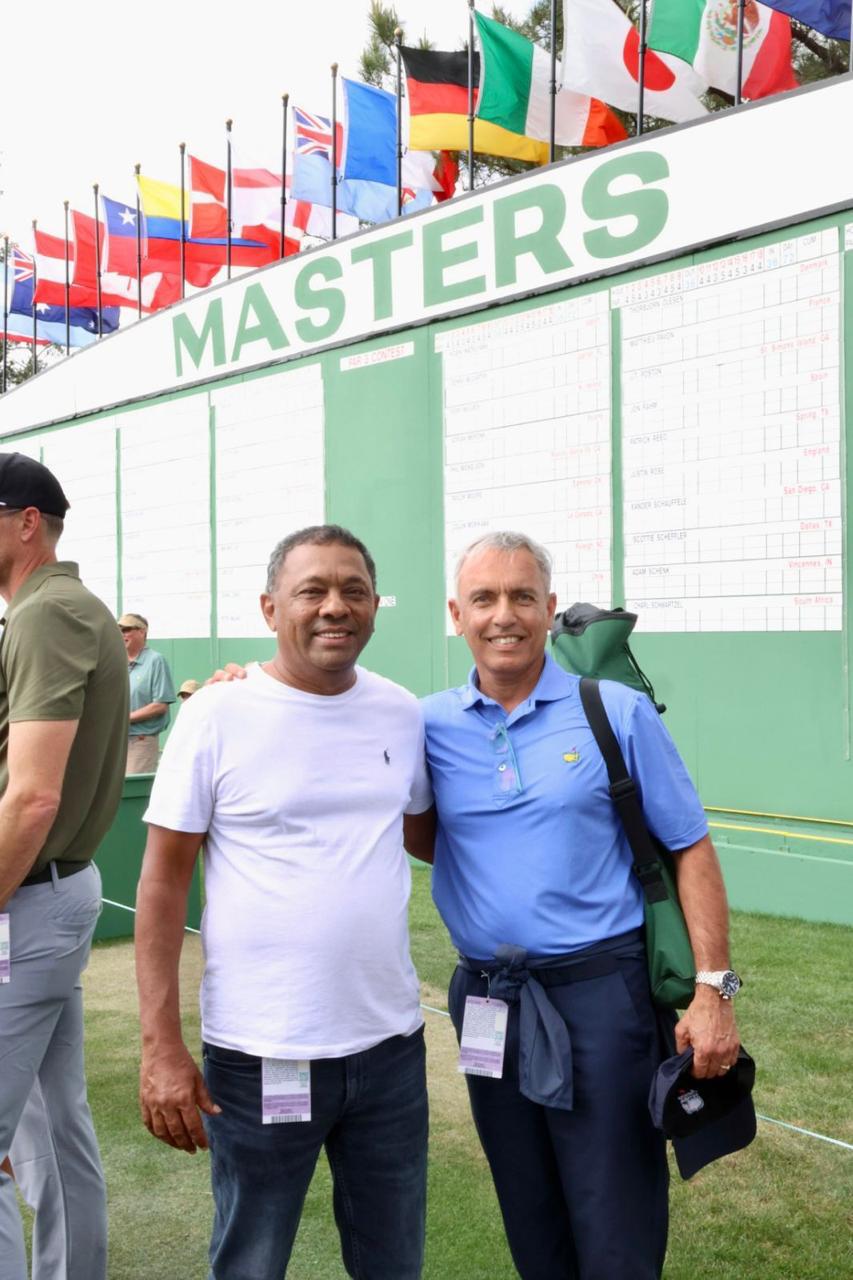
Rishi Narain (L) and Ramesh Radhakrishnan at the Par 3 tournament which saw 4 hole in ones !
Being at Augusta National GC for the 2nd time at The Masters was again a learning experience for me. Here are three learnings that could be applied in the Indian context:
- Creating emotional connect with fans – The Masters, founded in 1935 ( the youngest of the four major championships) has built its brand and fan appeal on tradition. To ensure that they get the past greats to attend every year The Masters has created events like the player’s dinner where all past Masters champions are invited to attend a dinner hosted by the defending champion. They also do the ceremonial tee off on Round 1 – this year by legends Jack Nicklaus, Gary Player & Tom Watson who between them own 11 Masters titles. At the Indian Open wouldn’t it be nice to invite back all past Indian winners of the tournament for a dinner in their honour and do a ceremonial tee off of some of our past legends ? This is stuff that the media and fans just love and so do the players.

Legends such as Jack Nicklaus attend The Masters each year adding media and fan appeal

From L-R – Arun Murugappan & Rishi Narain
- Spectator facilities – At The Masters, the presence of helpful volunteers, abundant information for spectators ( called patrons at The Masters) and directional signages, snack & drink stands plus spectator seating and mounds make the experience for visitors a real delight. At large scale professional events in India (of which we are left with only one a year now) there is hardly any thought paid to spectators convenience and it appears in fact they are almost discouraged and looked upon as an after-thought. A change in attitude is required here also.
- Merchandise – the merchandise tent featuring The Masters logo registers anywhere from 50 to 100 million USD in sales depending on which source you believe to be accurate. This involves a huge marketing exercise and commitment of the club and the team organising the event to invest long term in building the long term brand of the event. In India, the large professional events usually finalise the venue only two months prior to the event and everything is done last minute with uncertainty surrounding various aspects of the event. A coordinated effort is required in India by the venue, sponsors and organisers in order to build the brand and sport of golf for the long term.
Being at The Masters is indeed a privilege and an eye opener to any visitor. It means different things to different people. I do hope that some of the valuable lessons to be learned at The Masters can be applied in the Indian context sometime in the near future.

